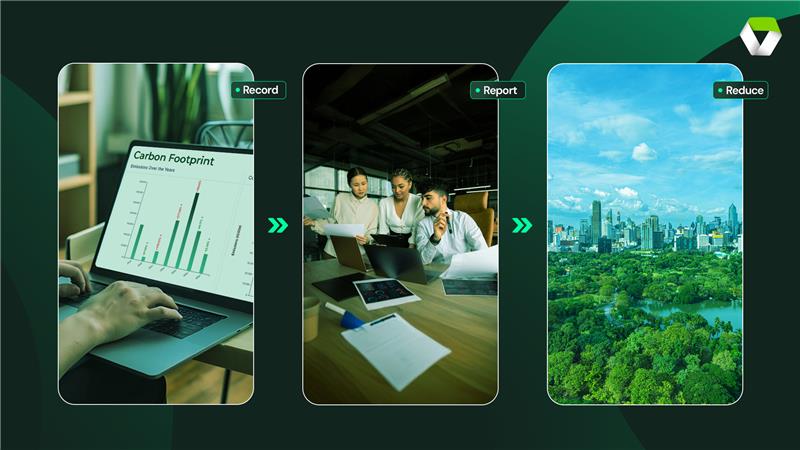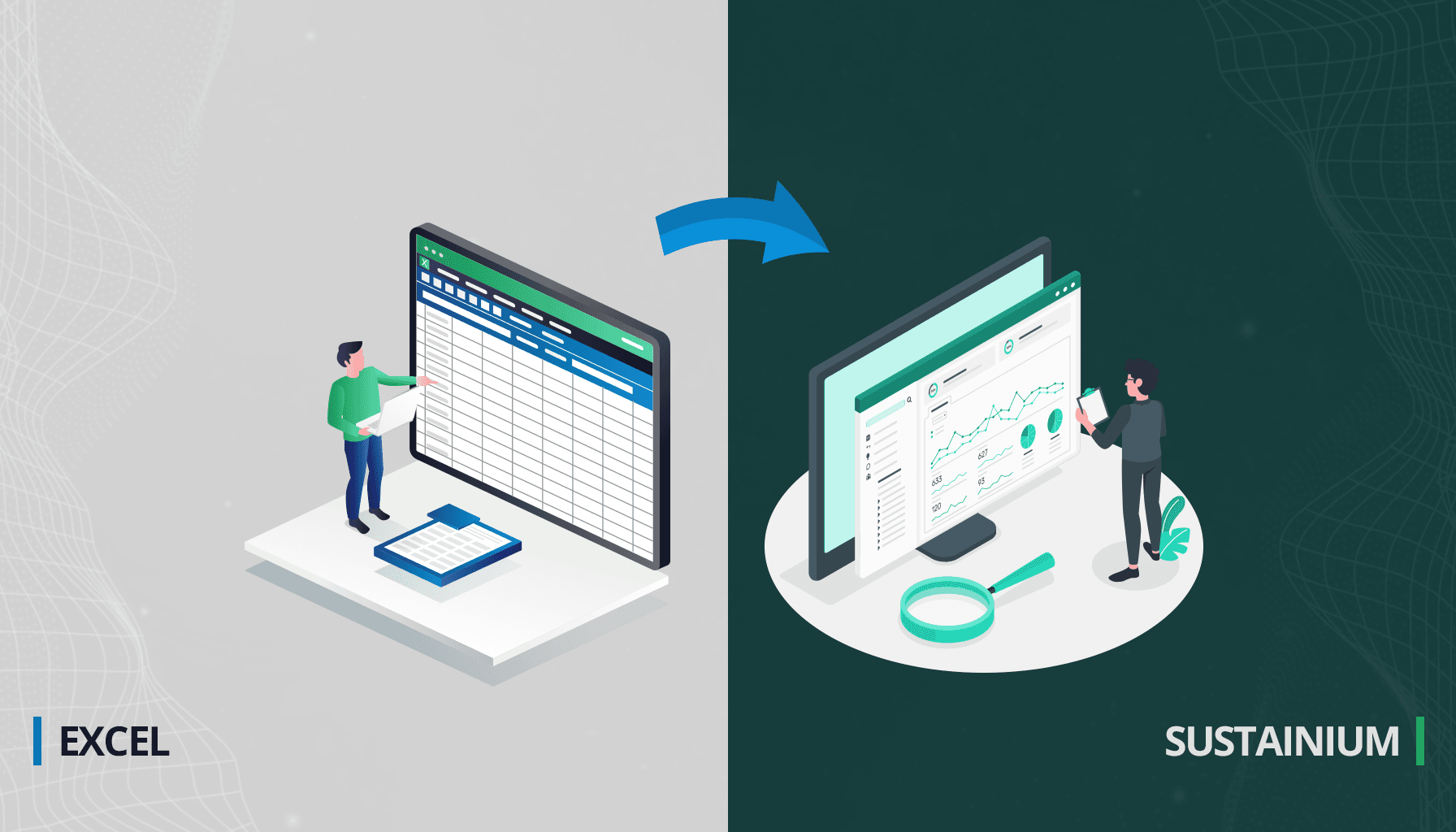Decoding Your Environmental Impact: A Comprehensive Breakdown of Emission Types

As businesses continue to prioritize sustainability, understanding your organization's carbon footprint (a.k.a Greenhouse gas (GHG) emissions) becomes crucial. This post guides you through the various types of GHG emissions, helping you grasp the scope of your environmental impact, and plan and strategize effectively for a sustainable future.
Introduction to Carbon Footprint
Carbon footprint is a measure of the total GHGs expressed as carbon dioxide equivalents (CO₂e)—emitted by an individual, organization, event, or a product. These emissions can occur directly through the organization's activities or indirectly due to the organization's broader network of associated activities, such as consumption of imported energy, and from its value chain.
Understanding Emission Types
Looking into Scope 1 Emissions: Direct GHG Emissions
Scope 1 emissions are direct emissions from sources that an organization owns or controls.
- Examples: This includes the burning of fossil fuels on-site, emissions from company-owned vehicles, fugitive and other process emissions
- Significance: Direct emissions are crucial for setting the baseline of your environmental strategy, pinpointing immediate areas for action and setting reduction or removal enhancement targets.
Moving Forward to Scope 2 Emissions: Indirect GHG Emissions due to Purchased Energy
Scope 2 covers emissions from the generation of purchased electricity, steam, heat or cooling.
- Examples: These emissions stem from energy that is purchased and used by the organization, such as electricity used in company buildings, energy used for generating steam, heat or cooling purposes.
- Significance: These emissions highlight the impact of a company's energy consumption, guiding decisions on energy sourcing and efficiency.
Lastly, Scope 3 Emissions: Indirect GHG Emissions that occur in the Value Chain
Scope 3 emissions are all indirect emissions (not included in Scope 2) that occur in the value chain of the reporting company, including both upstream and downstream emissions.
- Examples: They encompass emissions related to business travel, employee commuting, upstream and downstream transportation (not owned or controlled by the reporting organization), and the other lifecycle impacts of activities and processes of the organization from Cradle to Grave (except those owned or controlled by the reporting organization).
- Significance: Scope 3 offers a comprehensive view of the organization’s wider carbon footprint, involving complex and extensive collaboration across the value chain, especially the significant contributors.
Strategic Approaches to Emission Reduction
- Start with Scope 1: Begin with a thorough assessment of direct emissions and its impact on the organization’s GHG Goals. Key initiatives can include avoiding GHG emissions through operational changes, reducing on-site fuel consumption, improving industrial process efficiencies, and upgrading existing infrastructure to cleaner alternatives.
- Advance to Scope 2: Mitigate emissions associated with purchased energy produced using non-renewable or GHG-intensive sources by transitioning to renewable energy sources. Consider contracts for green energy, invest in on-site renewable energy projects like solar panels so that organizations have direct control over energy production, and implement comprehensive energy efficiency measures.
- Collaborate on Scope 3: Tackling these extensive emissions requires cooperation across the value chain. Work with suppliers to enhance their environmental performance, rethink logistics to favor sustainable methods, and redesign upstream and downstream operations for better environmental compatibility.
Your Pathway to Enhanced Environmental Stewardship
Mastering the understanding and management of Scope 1, Scope 2, and Scope 3 emissions is essential for any sustainability strategy. This not only aids in reducing your carbon footprint but also aligns your business with global sustainability objectives, enhancing your reputation as a leader in corporate responsibility. Stay connected for more insights and strategies on navigating corporate sustainability challenges effectively and being the reason for the change towards an environmentally responsible business.
Technological Innovations in Emission Management
With us you can get on board to stroll through the latest technological advancements. These technologies are revolutionizing companies’ ways to reduce emissions. From AI-driven analytics to IoT sensors for real-time data collection, technology is very important in achieving sustainability goals.
What We Offer:
- AI-Powered Emission Analytics: Learn about emission patterns and predict future trends using our cutting-edge AI algorithms, enabling strategic decision-making.
- IoT Real-Time Monitoring: Stay updated on your emissions status with IoT sensors providing data across multiple facilities using one platform.
- Custom Reporting Dashboards: Visualize your carbon footprint with custom dashboards designed to simplify data interpretation for all stakeholders.
Take the sustainability train with us and discover how technology can help you unlock unprecedented efficiency in managing GHG emissions across your organization, even through the challenges of accounting Scope 3 emissions.
Regulatory Compliance and Sustainability Reporting
We simplify the process with our comprehensive compliance and reporting solutions for you. Our team understands the importance of adhering to environmental regulations and how sustainability reporting can enhance transparency and accountability. Our experts work closely with your team to ensure compliance with global standards such as the ISO 14064, GHG Protocol Corporate Standard, and other frameworks.
Our Compliance Solutions Include:
- Gap Analysis & Compliance Roadmap: Identify regulatory gaps and create a roadmap for full compliance.
- GHG Reporting Frameworks: Tailored guidance for preparing GHG reports in line with global standards like ISO 14064, GHG Protocol Corporate Standard and others.
- Audit Preparation & Support: Comprehensive assistance in preparing for first-party, second-party and third-party verifications, ensuring accurate and credible reporting.
Engagement and Collaboration Opportunities
Your business can engage with supporters of sustainability like us, including governments, NGOs, and the community, to promote more collaborative efforts towards substantial environmental improvements.
Through our structured and comprehensive approach, we help organizations to understand and actively manage their environmental impacts more strategically and effectively.
To know more about our Sustainium series and insights, visit our website now!






